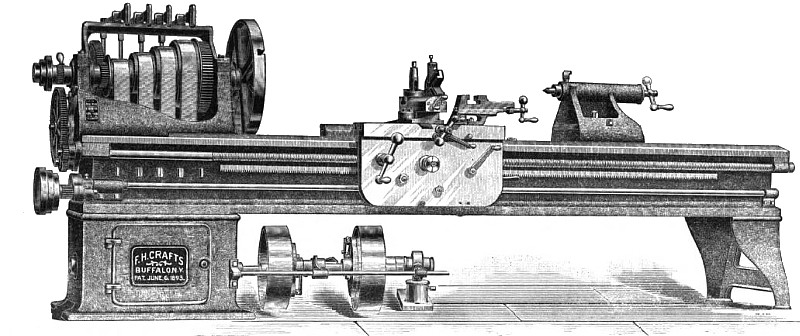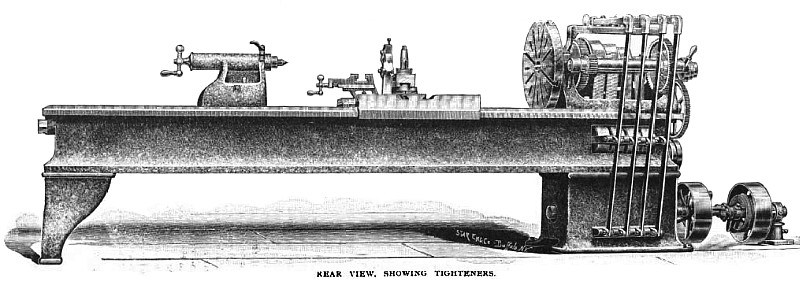...New Driving Device for Engine Lathe...
F. H. Crafts, senior member of the Buffalo Wood-working Machine Co., Buffalo, N. Y., has invented a driving device for engine lathes and other machines employing cone pulleys. The accompanying cuts give front and rear views of a 22” swing engine lathe embracing the new device...
The lathe was built in Cincinnati, by leading tool-builders, and at the experimental trial a number of manufacturers were present, and expressed their satisfaction with the results. The lathe has been subjected to the severest tests, with gratifying results, and there seems to be no doubt of its future...


F. H. Crafts, senior member of the Buffalo Wood-working Machine Co., Buffalo, N. Y., has invented a driving device for engine lathes and other machines employing cone pulleys. The accompanying cuts give front and rear views of a 22” swing engine lathe embracing the new device...
The lathe was built in Cincinnati, by leading tool-builders, and at the experimental trial a number of manufacturers were present, and expressed their satisfaction with the results. The lathe has been subjected to the severest tests, with gratifying results, and there seems to be no doubt of its future...



